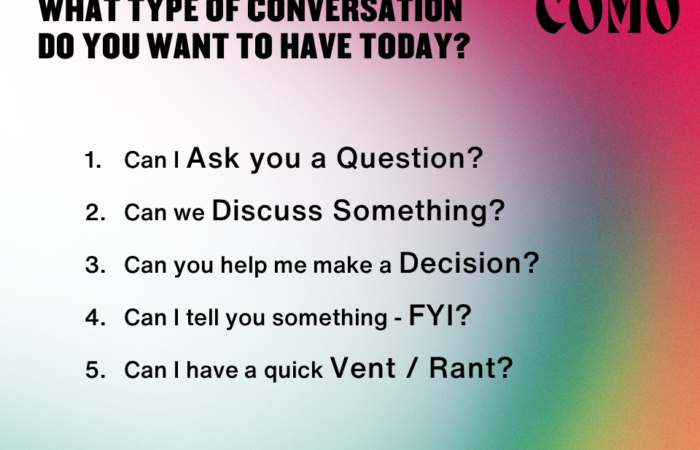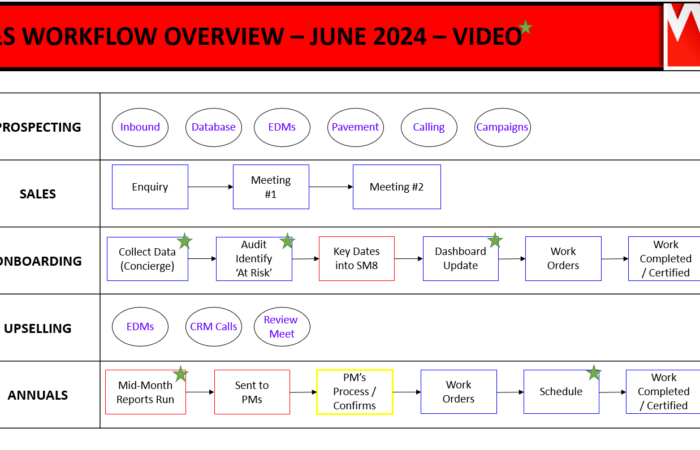Creating Workflows that Work and Flow. In Blackboard Fridays Episode 57, Jacob talks about Productivity. Need this implemented into your business? Talk to the international business advisor who can do exactly that – Contact Jacob, Learn More, or Subscribe for Updates.
Implementing an R’n’R project in your business takes time – and as we saw last week, can be a massively profitable initiative.
If there was one element that delivered the greatest bang for your buck, I would suggest ‘Workflows’ would be it. Clear, documented workflows in a business connect the separate roles and responsibilities with the actual deliver of your policies and procedures.
Best of all – they can be fun to create, and literal works of art when completed. I have several clients with Workflows that adorn their office walls – do you reckon they’re fun places to work?
Watch this week’s episode here, and show your team ahead of the next team meeting.
Who is Jacob Aldridge, Business Coach?
“The smart and quirky advisor who gets sh!t done in business.” Back independent since 2019.
Since April 2006, I’ve been an international business advisor providing bespoke solutions for privately-owned businesses with 12-96 employees.
At this stage you have proven your business model, but you’re struggling to turn aspirations into day-to-day reality. You are still responsible for all 28 areas of your business, but you don’t have the time or budget to hire 28 different experts.
You need 1 person you can trust who can show you how everything in your business is connected, and which areas to prioritise first.
That’s me.
Learn more here. Or Let’s chat.
Transcript
In last week’s episode of Blackboard Fridays, I promised that this week we were going to depth on workflows. So, why does your business need better workflows? Well, if you’ve ever had a situation where members of your team aren’t sure who does what in what order, then you need to get this documented.
The process I’m going to take you through today is designed to be colorful and it’s designed to be very clearly communicated to you, your team, and potentially, even your clients so that they know the process they’re going through to get to their outcome through your business sooner.
Now, a couple of different tools you’ve got to remember that we’re using here the first is the colors from the R’n’R model. Black for wealth, green for growth, blue for revenue, red for admin.
At each step along the workflow process, we’re going to color code it into which of those four areas of the business that task fits. Why do we do this? Because when we see a workflow process that bounces between different colors, between green and blue and back to green or to blue, then red, then red, then blue, then green, then red–that’s a sign of inefficiency within your business.
Plus, and I have clients who do this, stick the workflow up on the wall of your business or in your studio or your office. Have it on display so that everybody could see it, and having those colors there makes it a visual piece of meaningful art as opposed to just something that’s quite bland and done with triangles in Microsoft Word. So, those are the colors that we’re using.
We’ve broken this business down into what we call swim lanes. You can see it’s a bit like an Olympic swimming pool. We’ve got the different roles and I’ve got a nice simple example here. Sales team, the studio, the operations, delivery, and the administration or the finance function within the business.
Have a look at a lot of different workflows across many different businesses but there is a most common one. Let’s start with a client. Here’s the process that we go through for creating the workflow.
I asked what happens when a lead comes in. The business says, “Well, that goes to you know the sales team potentially”, and and they make a phone call. What happens then? Essentially, my role in facilitating this conversation, and if you as a business owner want to facilitate the conversation, sit down and watch the epic movie Dude, Where’s my Car?
Because the conversation you’re going to be having awful lot of is ‘and then and then and then’. You want to walk through every step along the sales process and then the client says, “Yes, fantastic. What happens next?” “Well, it goes into the studio and somebody does this and then we do this and then we have a team meeting and this happens, and then, and then, and then and then the client gets the final project and they love it and they’re delighted and so we send them the invoice.
Maybe, we need to also then flow into customer service or debtors or some of those processes. In a small business, you can actually get the entire workflow onto a single sheet of paper. The larger your business, the more you need to break down some of those workflows into different areas in the business. Maybe the entire sales team has their own workflow process. A factory, particularly in a larger manufacturing business, is going to have a whole lot of different steps along the way. You want to map that out.
Similarly, accounting, finance can often get to a lot of detail around the different steps that those individuals take, or within a business that’s got multiple people, you’ve got to break it down even further.
The level of detail in your workflow is the level of detail that is right for you, for your business. It’s not as simple as just copying what another business in your industry does. Make it your own.
It’s not a lengthy process to have the “and then” conversation. Once you’ve done that, you’re going to identify as I flagged potentially different colors where we’re bouncing back and forth between different tasks or maybe, you’ve got somebody here so somebody in the operations team that’s doing a whole lot of administrative stuff.
Are they the best person? Is that their skill set? Or are we bouncing between the colors too much? You might also identify that the process takes you back forth a whole lot where a single client going through the workflow process has their job handed between multiple individuals back and forth.
How do you review your workflow process to streamline that? To make it as smooth as possible because smooth is fast, fast is what your client is looking for.
Lastly, I’d encourage you to sit down with the team once you’ve got that documented and go write which steps in this workflow process are causing us the most pain, where are we getting frustrated, where is your energy.
You don’t need to do a detailed analysis. The team will be able to tell you that’s really difficult. This part of the process is really annoying me.
If you remember in the R’n’R business, the step after workflow is policies and procedures, improving how you do what you do, and you’ve now just identified the top priorities for reviewing and improving the performance of your operations.
Clear workflow process works for your team and flows for your clients. It’s streamline, it’s efficient, and it gets read all of those frustrations that may be bugging your team on a daily basis.
Next Steps
Want to learn more about how this can apply to your business? It costs nothing to chat:
- Email me jacob@jacobaldridge.com (I read them all)
- Call, Text, or WhatsApp me +61 427 151 181
- Or just Subscribe https://jacobaldridge.com/about/subscribe-to-jacob-aldridge-com/ to stay in touch




